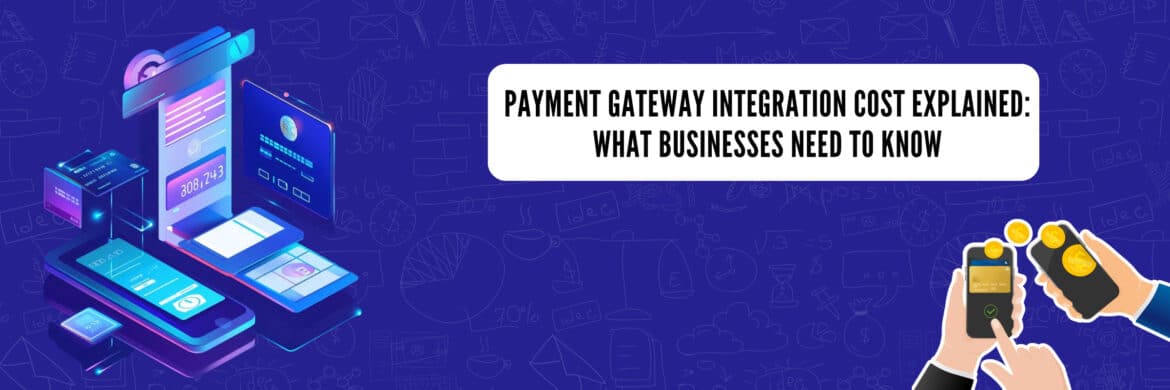
Optimizing Payment Processes with Stripe Integration
Suprabhat Sen | June 7, 2024 , 7 min read
Table Of Content
Without a doubt, Stripe should be your go-to choice for any e-commerce venture. Since its establishment in 2011, Stripe has emerged as a top-notch payment solution renowned for its user-friendly nature. This article will introduce Stripe to those unfamiliar with this exceptional service and provide insights into how to integrate Stripe payment gateway into your e-commerce website. Let’s get started!
Introduction to Stripe
In an e-commerce scenario, when a customer places an order, their billing information and order details (like the total cost) are gathered. This information is then forwarded to a payment gateway like Authorize.net, which links credit card companies and the merchant account. The payment gateway verifies if the customer’s credit card can be charged and sends this information to the merchant account. The payment gateway also sends the transaction results back to your website. Your merchant account accepts credit card payments and coordinates these transactions with your bank account to deposit the funds.
It’s important to note that different payment gateways and merchant accounts support different card types, so ensuring their compatibility is essential. Sometimes, your bank can also serve as your merchant account.
Moreover, various fees are involved in this process, including charges from the payment gateway and the merchant account.
So, how does Stripe differ? Stripe acts as the payment gateway and the merchant account, making it a “full-stack” solution. Your website sends customer and order information to Stripe, which then processes the payment with the credit card company and transfers the funds to your bank account. The unique aspect of Stripe is that you don’t need a specific or special type of bank account for this process—it just works seamlessly.
Benefits of Stripe Integration
Integrating Stripe into your payment process offers many benefits for your business. Here are some key advantages:
1. Streamlined Payment Processing
Stripe’s API allows for easy integration with your existing systems, enabling you to automate payment processing tasks and streamline your payment workflows. This can help you save time and resources, allowing you to focus on growing your business.
2. Simplified Checkout Experience
Integrating a payment gateway into your website or app can be a daunting task. Fortunately, Stripe provides customizable checkout flows that make payment gateway integration a breeze. By seamlessly integrating Stripe into your website or app, you can create an intuitive payment experience for your customers, resulting in increased conversion rates.
3. Global Payment Support
Stripe payment gateway could be a great option for you. With Stripe, you can easily accept payments from various payment methods and currencies, enabling you to reach a broader customer base and grow your business globally. So, why not explore the benefits of Stripe payment gateway integration today?
How Stripe Integration Works?
Integrating Stripe into your website or app involves several steps, but Stripe’s developer-friendly approach makes the process relatively straightforward. Here’s an overview of the key steps involved:
1. Setting up a Stripe Account
The first step is to create a Stripe account. You can sign up for an account on the Stripe website and provide the necessary information about your business.
2. Obtaining API Keys
Once you have set up your Stripe account, you will need to obtain your API keys. These keys are used to authenticate your requests to the Stripe API and are essential for integrating Stripe into your website or app.
3. Integrating the Stripe API
To integrate Stripe into your website or app, you will need to use the Stripe API. The Stripe API allows you to securely process payments, manage customer information, and more. You can integrate the Stripe API into your website or app using one of Stripe’s client libraries, which are available for various programming languages.
4. Customizing the Checkout Flow
One of the key advantages of Stripe is its customizable checkout flows. You can use Stripe’s Checkout feature to create a customized payment experience for your customers. Stripe Checkout allows you to add payment buttons, collect customer information, and process payments securely.
5. Testing the Integration
Before deploying your Stripe integration to production, it’s essential to test it thoroughly. Stripe provides a test mode that allows you to simulate transactions and ensure that your integration is working correctly.
6. Going Live
Once you have tested your Stripe integration and are satisfied with its performance, you can switch it to live mode. In live mode, you can start processing real payments from your customers.
Case Studies
Businesses across various industries have successfully optimized their payment processes through Stripe integration. Here are some real-world examples and case studies:
1. Lyft:
Lyft collaborated with Stripe to develop Express Pay, which allows drivers to receive payments more frequently, typically within a few hours of completing a ride. This feature addresses drivers’ need for more flexible payout options and enhances their overall experience.
2. Instacart:
Instacart, operating a complex multi-sided marketplace, leveraged Stripe to streamline payments across consumers, grocery stores, shoppers, and delivery partners. Features like Instant Cashout facilitated faster payouts to shoppers and retailers, improving operational efficiency.
3. Shopify:
Shopify utilized Stripe Treasury to create Shopify Balance, offering independent business owners a seamless way to access critical financial products and manage their finances within the Shopify platform. This integration tailored financial services to meet the specific needs of Shopify merchants, enhancing their financial management capabilities.
These examples demonstrate how businesses like Lyft, Instacart, and Shopify have successfully optimized their payment processes by integrating with Stripe, leading to improved customer experiences, operational efficiency, and revenue growth. To learn more about how businesses are optimizing their payment processes using Stripe, please refer to their Customers section.
Conclusion
Integrating Stripe into your payment process can change the way you handle transactions online. With its security features, customizable checkout experiences, and global payment support, Stripe offers a range of benefits for businesses looking to optimize their payment processes.
By leveraging Stripe’s integration capabilities, you can improve the security of your payment transactions, simplify your customers’ checkout experience, expand your business’s reach internationally, streamline your payment processing workflows, and gain valuable insights through advanced reporting and analytics.
In conclusion, optimizing payment processes with Stripe integration is not just about enhancing your customers’ payment experience but also improving the efficiency and security of your payment operations. By integrating Stripe into your website or app, you can create a seamless and secure payment experience that drives growth for your business.
So why wait? Start integrating Stripe into your payment process today and unlock the full potential of online payments for your business.
Frequently Asked Questions
Q: What types of businesses can benefit from integrating Stripe?
Any business that sells products or services online can benefit from integrating Stripe. This includes e-commerce stores, subscription-based services, marketplaces, and more.
Q: Is it difficult to integrate Stripe into my website or app?
Integrating Stripe is relatively straightforward, especially with the comprehensive documentation and developer-friendly tools provided by Stripe. However, depending on the complexity of your integration, some technical knowledge may be required. You may contact our team to help with the integration
Q: Does Stripe support recurring payments and subscriptions?
Yes, Stripe supports recurring payments and subscriptions. You can use Stripe’s Subscription API to set up and manage subscriptions for your products or services.
Q: How does Stripe handle disputes and chargebacks?
Stripe provides tools to help you manage disputes and chargebacks efficiently. You can respond to disputes directly from your Stripe Dashboard and provide evidence to support your case.
Related Blogs

Payment Gateway Integration Cost: Detailed Explanation
Wondering how much payment gateway integration actually costs? Discover the key factors that influence pricing, from setup fees to transaction costs and more.
Suprabhat Sen
Apr 28 ,
14 min read

High-Risk Merchant Fees: Rates and Cost Saving Strategies
Learn about high-risk merchant account fees, from setup costs to transaction rates. Compare fee structures and choose the best payment processor for your business.
Suprabhat Sen
Apr 28 ,
13 min read

High-Risk Merchant Account: Everything You Need to Know
Learn what a high-risk merchant account is, its benefits, drawbacks, top industries using these accounts and how to choose the best provider for your business.
Suprabhat Sen
Apr 3 ,
16 min read








